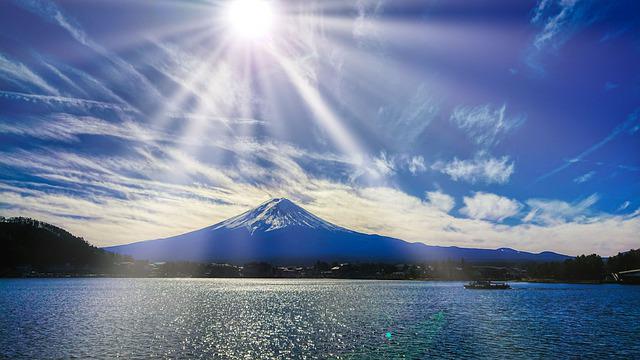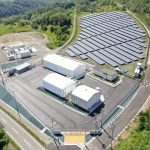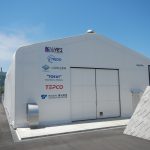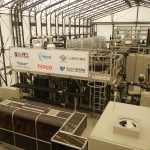
In October 2020, the Japanese Government declared that it will achieve carbon neutrality by 2050, with new initiatives at the national level and others implemented in the regions as part of a global effort. One example of local government efforts to achieve carbon neutrality is in Yamanashi Prefecture, one of the most advanced regions for hydrogen and fuel cell research.

Yamanashi Prefecture / Komekurayama Power Storage Technology Research Site Overview
Yamanashi Prefecture is an inland prefecture in the centre of the Japanese archipelago, adjacent to the west side of Tokyo. With beautiful mountains, including the World Heritage Site Mt Fuji, it is blessed with a rich natural environment, with forests covering approximately 78% of the prefecture’s land area. Yamanashi is not only Japan’s top producer of grapes, peaches and plums, it is also famous for its mineral water, with exports of mineral water being the highest in Japan.
The region is also renowned as a wine-producing area, boasting the highest production of wine and the most wineries in Japan, with the ‘Yamanashi’ brand the first geographical indication for wine in Japan. Wines produced in Yamanashi, such as Koshu wine, are internationally renowned.
The region is now a leader in hydrogen and fuel cell research.
Hydrogen is regarded by the Japanese Government as a critical technological resource essential for carbon neutrality, enabling decarbonisation in various fields such as transport, power generation and industry, with expectations of the fuel technology having a wide-ranging practical use.
Yamanashi Prefecture is home to a cluster of world-class hydrogen and fuel cell-related research centres, including the University of Yamanashi Fuel Cell Nanomaterials Research Centre, which is actively working on green hydrogen production and the utilisation to achieve carbon neutrality.

P2G Demonstration Research Building
Yamanashi Prefecture, in collaboration with several private companies, has been developing technologies for the production of hydrogen and its practical application, and in June 2021, at the Electricity Storage Technology Research Site on Mt Komekura in Kofu City, Yamanashi Prefecture, a green hydrogen production technology using electricity from renewable energy, P2G (Power to Gas) system, started to produce green hydrogen from renewable electricity, at the Power Storage Technology Research Site at Mt Komekura in Kofu, Yamanashi Prefecture.
The P2G system is a technology for producing green hydrogen by electrolysing water using electricity derived from renewable energy sources such as solar power. Green hydrogen has no carbon dioxide emissions either in production or as a fuel and will contribute to carbon neutrality worldwide.
The Komekurayama Power Storage Technology Research Site has a large-scale photovoltaic facility, meaning electricity that can be generated from solar energy is used to produce hydrogen, which is then compressed and transported to nearby factories. The site demonstrates how an integrated system produce and stores green hydrogen, its transport to factories and other facilities, and its use is an advanced initiative in Japan.

Inside the P2G Demonstration Research Building
In September 2021, public and private sector partners formed the Yamanashi Hydrogen Energy Society (H₂-YES) consortium in collaboration with several private companies to develop a large-scale P2G system to develop energy demand conversion and utilisation technologies.
In February 2022, the Prefecture and the private sector established the ‘Yamanashi Hydrogen Company’, the first P2G business company in Japan to further develop P2G. The company is accelerating the move towards practical applications through further technological development of P2G systems and is increasingly focused on making carbon neutrality a reality.
(References)
・Yamanashi Prefecture, Corporate Bureau, Electric Power Division, New Energy System Promotion Office
https://www.pref.yamanashi.jp/newene-sys/index.html (Japanese version)
https://www.pref.yamanashi.jp.e.aao.hp.transer.com/newene-sys/index.html (English version)

